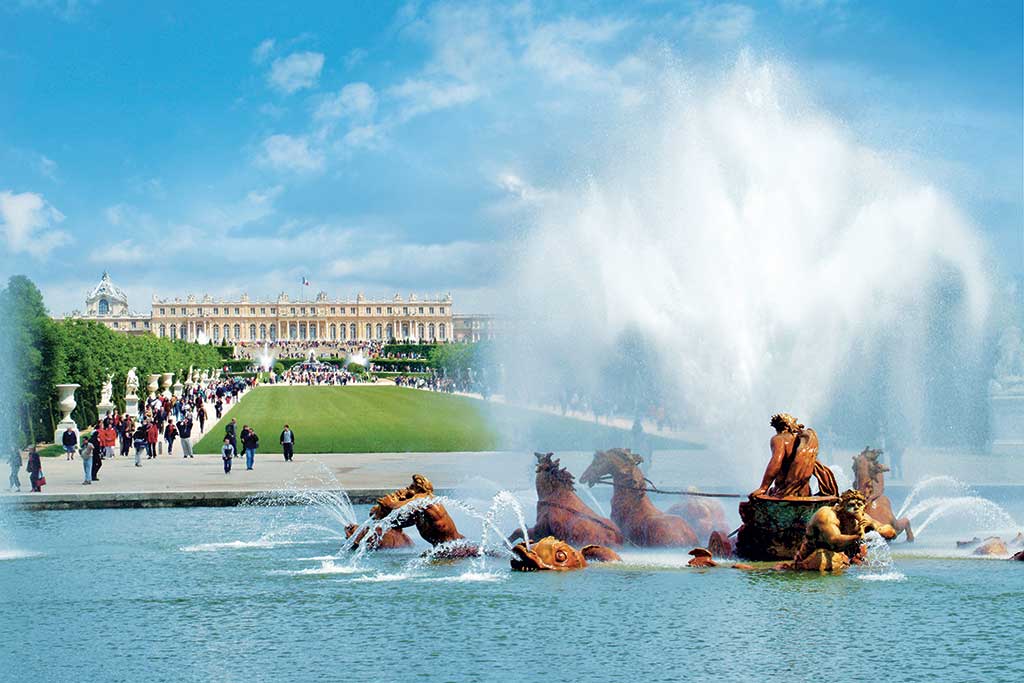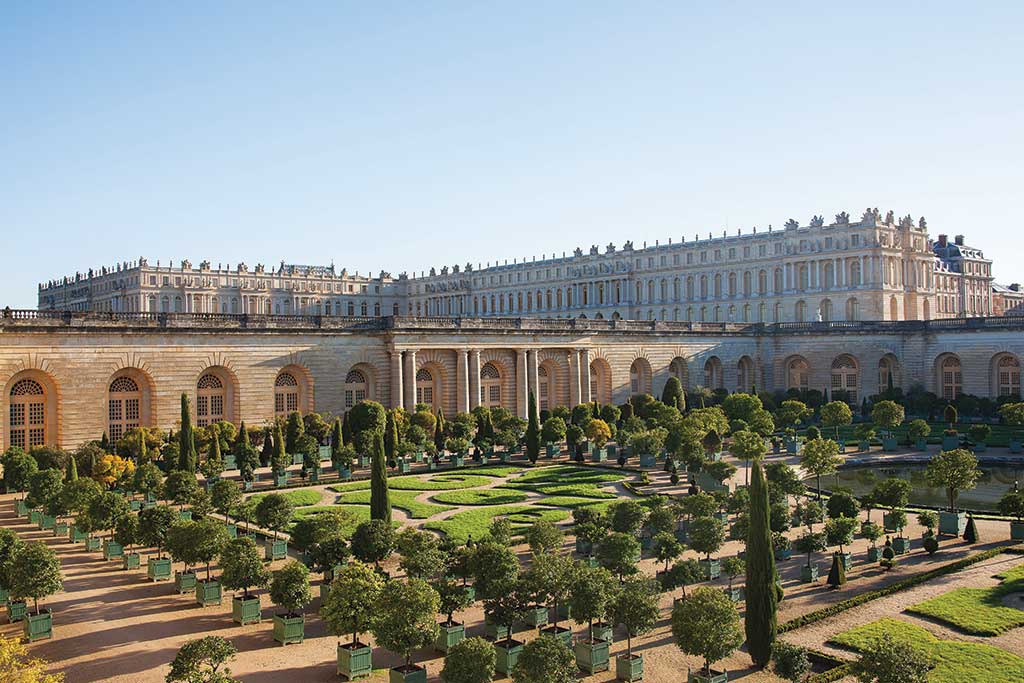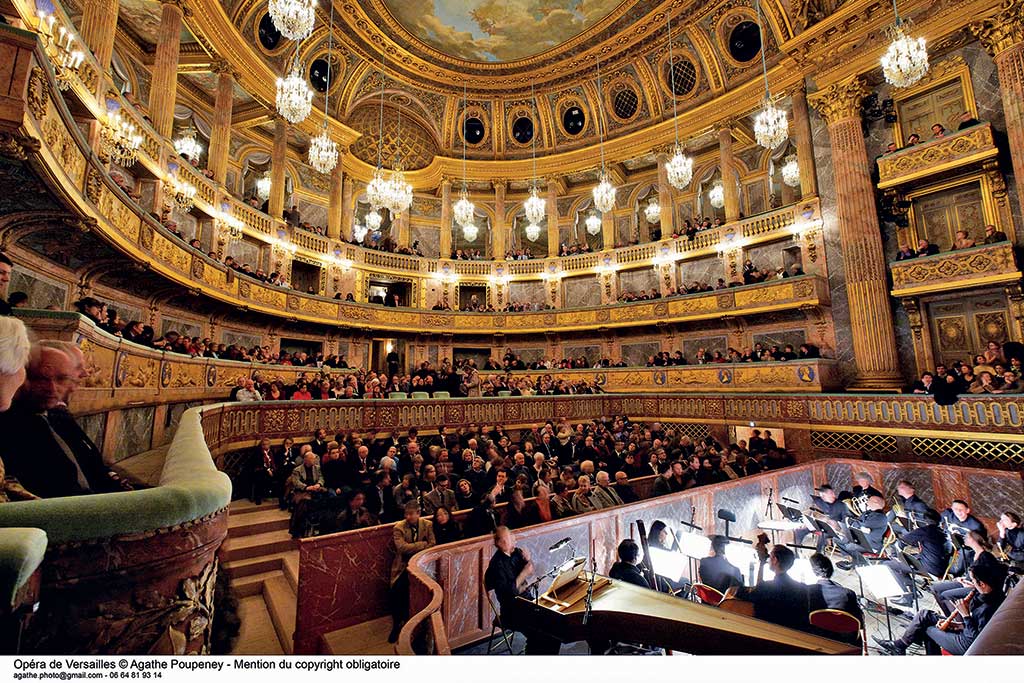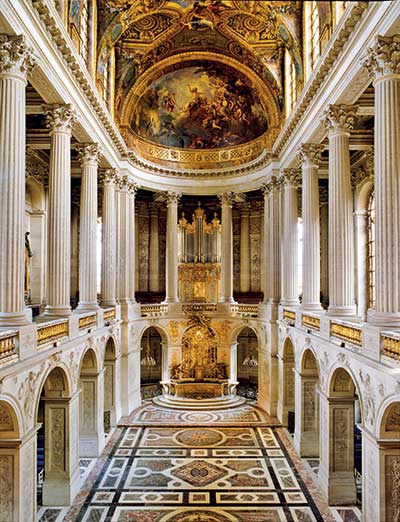Job description: Arranging masked balls at one of the most extravagant palaces in the world; deciding the seasonal programs of operas, ballets, and classical concerts at an exquisite former private opera house owned by a king; working with world-renowned artists such as Jeff Koons, Anish Kapoor, Murakami, and Olafur Eliasson; and staging a musical fountain show and fireworks in a formal royal garden. Sound like a dream job? Laurent Brunner is the lucky man who performs all of the above tasks and plenty more as the director of performances and spectacles at the Palace of Versailles. His position also includes the programming for The Royal Opera House of Versailles (www.chateauversailles-spectacles.fr/en), the jewel-like private opera house of King Louis XVI.
In our interview, Brunner speaks about his early love of music and art, the storied history of Versailles, highlights of the exciting 2018 season, and details about some of the standout performances from the past.

Les Grandes Eaux Musicales
Where were you born, and where did you grow up?
I was born in the East of France, in Lorraine, near Metz. Then I lived in Verdun, a very old Carolingian city, where a terrible battle took place during WWI: Germans againstthe French. I was ‘living amidst history’ since I was a child. I volunteered all my time to clean and restore the medieval and baroque Cathedral, built in 990. I was also an official guide to the battlefields. Then, I majored in art history and archeology at the University of Strasbourg.
At what age did your appreciation of music and art start, and what were some early events that made an impact on you?
At the age of six, I received a birthday present: an LP of Beethoven’s 5th Symphony, conducted by Karajan. Then I learned to play the piano. The first important concert I attend ed was performed by Jordi Savall, in Barle-duc, in Lorraine; I was 16 years old. I got to know him personally and professionally, and we have now been friends for 35 years! The first live opera I attended, at 18, was in the city of Metz, and I had to travel 60 km on my motorbike! It was a performance of Monteverdi’s Ritorno d’Ulysse. And the same year, I attended a performance in Epidauro, in Greece…the antique tragedy I saw in that incredible theater had a very profound impact on me.
What was your first experience organizing music events?
In 1990, I organized some wonderful musical concerts celebrating the millennium of the Cathedral of Verdun. William Christie came, along with Philippe Herreweghe; the program included eight concerts. It was a great success, and I was eventually given the opportunity to program a full concert season in Verdun. After two years, I became general manager of the local theater. Then, in 1996, I moved to Forbach, on the German border, to run Forbach’s performing arts center.
When did you become the director of performances at Versailles, and how did that job come to you?
When Jean-Jacques Aillagon, former minister of culture, became president of Versailles in 2007, he asked me to take on the direction of Château de Versailles Spectacles, a subsidiary of the Versailles organization, which is in charge of all musical and special event productions that take place at the Chateau and in the gardens. My special expertise was in the field of French baroque music, but I also had studied the work of Robert de Cotte, an architect who had a large role in designing and building the Royal Chapel at the Chateau of Versailles, where many of our concerts take place. So the prospect of working at Versailles was very exciting to me!

Versailles
What were some of the challenges when you first started?
I had to professionalize, reorganize, and extend all the open-air projects (Musical Fountain Shows) that take place in the Palace gardens. Prior to my arrival, they attracted an audience of 650,000 spectators, and now attract an audience of over 1.3 million visitors. On the art side, I had to invent a new concept for international contemporary art exhibitions (Koons, Murakami, Kapoor, Eliasson…) that take place annually at the Palace. Perhaps, most importantly, I needed to find a use for the Royal Opera, which had only been recently restored. This meant proposing to the public a new series of concerts in the most beautiful court opera in the world…without being given a specific budget! Another challenge was to identify the music, which makes sense to perform in that venue: staged productions, baroque music of France and Europe, stars, and other special events.
The Royal Opera of Versailles has been given back to the artists and audiences from all over the world, but for all these artistic projects, we need to be helped by donors and sponsors. As bizarre as it may appear, we do not have any public subsidies. If this amazingly beautiful treasure that is the Royal Opera, built for the wedding of Louis XVI and Marie Antoinette, means something to your readers, then we need their help to continue to stage first-class performances in this unique venue.
What makes the theatre so special, and what are the main reasons for someone to attend a performance?
At its opening in 1770, the Royal Opera of Versailles was the largest court theater in the world. It also had the biggest stage in France, until the construction of the Paris Opera a century later. Fortunately for us, the Opera of Versailles was not really used after the fall of the monarchy: thus it has not been modernized nor transformed, and today the public rediscovers a richly decorated place, as Marie Antoinette knew it. With its architecture of wood, gold, and crystal, it is truly a jewel for baroque opera performances, from Monteverdi to Lully, Handel, Vivaldi, and Rameau. Mozart would have been dazzled by this theater in which his music sounds magnificent, and thanks to its limited number of seats (only 700), each spectator sees the stage very well and listens to the music perfectly. When one is lucky enough to be able to sit in the Royal Loge to see and hear Roberto Alagna or Joyce DiDonato, one really lives a dream in the most beautiful Palace of Europe!

The Royal Opera
Which performances from the past have been your favorite?
Tays, Opera of Lully, directed by William Christie; Monteverdi’s Vespers performed in the Royal Chapel by John Eliot Gardiner; Lang Lang performing in the Hall of Mirrors; an incredible night with Cecilia Bartoli who sang first in the Royal Opera and then (it was a surprise for the public) in the Royal Chapel, and finally in the Hall of Mirrors, where, as a firework display took place outside, she staged her encore in the most splendid palace room in the world! It was an unforgettable evening. But I also remember Joyce DiDonato, Barbara Hendricks, Sonya Yoncheva, Opera Lafayette of Washington, Opera Atelier from Toronto, Philippe Jaroussky, Bryn Terfel, Roberto Alagna, Natalie Dessay… and also, on our open-air stage, a splendid evening with Anna Netrebko! Finally, I would like to mention two miracles of the past season. First, the opera Orfeo, by Luigi Rossi. Everyone had forgotten this Orfeo, one of the first operas played in France: the conductor Raphael Pichon has revived it with energy and color, and has made it a triumph. And I cannot forget, in June 2017, the Gala Dinner of the Friends of the Royal Opera, which was a dream. Cocktails in the Royal Chapel, a show in the Royal Opera, dinner in the Galerie des Batailles, and a finale in the Hall of Mirrors.

Royal Chapel
Please tell us some highlights of the 2018 season.
First, two works closely related to Versailles: Lully: his magnificent opera Phaeton, not performed in France for 25 years, a production from the Opera of Perm, Russia (May 30 and June 1-3); Gluck: Orfeo and Eurydice, with the talented Philippe Jaroussky in the title role (June 8 and 10) Also, two masterpieces by Cavalli: Erismena, a production from the festival of Aix en Provence, then Giasone, which was the most frequently performed opera in Italy in the seventeenth century (March 9 and 10). Finally, what only Versailles can offer: The Day of Louis XIV, a typical day of the King, lived through all its music. The music starts from the morning’s awakening, followed by the Royal Mass, the Hunt, the King’s Supper, the Opera and the finale in the Hall of Mirrors…an amazing day to enjoy all the favorite music of the Sun King throughout the entire Palace of Versailles. Only two performances will be presented: July 8 and 9.
There’s usually a costume ball at the palace in June. Can you tell us what’s in store for next June?
Under Louis XIV and Louis XV, the Masked Ball was the most sumptuous moment of the court’s feasts at Versailles: all Europe admired it, as much as the one held in Venice. We therefore recreated this Ball, applying the same principles that existed at the original time. After an evening in the Royal Gardens, with all the Water Fountains on and Fireworks, the Ball starts at midnight in the majestic Orangerie and finishes at dawn. Everyone has to wear a sumptuous costume, the most astonishing possible, and hide behind a mask. The court of Louis XIV was very young, they loved having fun, and the dance was really a major art: the King danced in the Court Ballets as a professional until he was 32 years old, playing 60 different roles! Today, the youths, full of glamour and Champagne, come from all over the world to be part of this night of madness led by the best DJs. It ends in the morning with an after-party in the Ballroom grove, a grove of the gardens of Versailles with an extraordinary waterfall, where Louis XIV had the habit of dancing. It is a moment out of time! Hakim Ghorab, a brilliant choreographer who works for the biggest stars, will be the master of ceremony of the Grand Bal Masqué of Versailles 2018 (Saturday June 23). For those who would like to spend a soirée identical to those of the Grand Siècle, we invite them to be part of Les Fêtes Galantes in the Hall of Mirrors. Fans of historical costumes will be dancing to the rhythm of baroque music, and the most magnificent costumes will be showcased in Versailles for a celebration of the Sun King and French Majesty (Monday, May 28).
What are some important historical facts about Versailles and the opera that most people don’t know?
While Louis XIV really wanted to have an Opera in Versailles, he did not have time and money to build it. It was Louis XV, at the end of his reign, who did it, but with a different goal in mind: the Opera was to be used only for princely marriages! So the venue was designed to host an opera show, but also to become a banquet hall, and finally to be able to be turned into a large ballroom, going from the back of the stage to the back of the room. It was therefore a place reserved only for extraordinary circumstances: it was used only 19 times in 20 years! This infrequent use is also partially explained by the enormous cost of staging events in the Opera, which, of course, was lit solely with an enormous number of candles.


